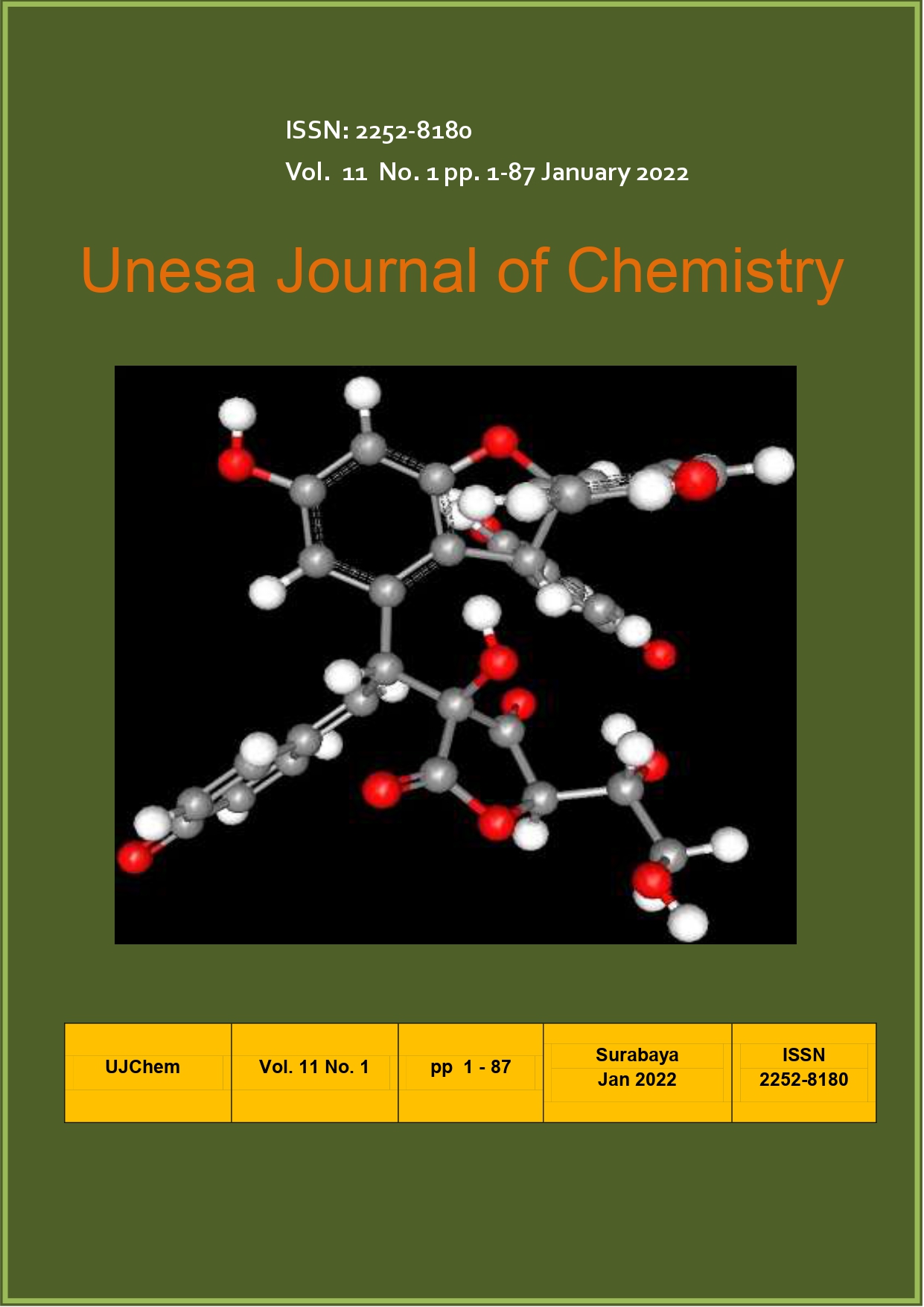Characterization and Effectiveness Test Gel of Aloe vera Combination Chitosan as Staphylococcus aureus Antibacterial
Main Article Content
Downloads
Download data is not yet available.
Article Details
How to Cite
Cahyaningrum, S. E., & Susanti, P. G. (2022). Characterization and Effectiveness Test Gel of Aloe vera Combination Chitosan as Staphylococcus aureus Antibacterial. Unesa Journal of Chemistry, 11(1), 26–33. https://doi.org/10.26740/ujc.v11n1.p26-33
Issue
Section
Articles

